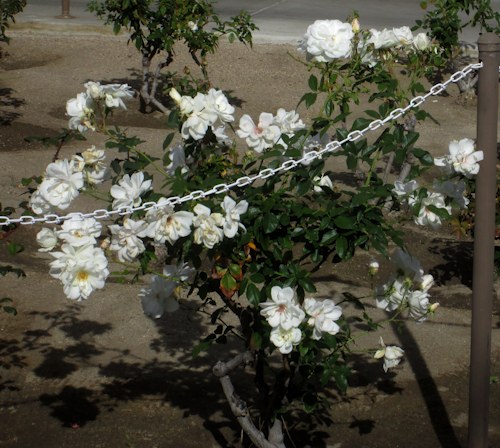I found this item that seems to fit here as well as anywhere. Simply stated, silicon seems to be broadly beneficial, and the ability to absorb it through the roots varies among species, as does the ability to accumulate it.
I have no details yet about Rosa species, but in some cases the reported disease resistance may be due to silicon uptake and accumulation.
Silicon in Plants: Advances and Future Prospects (2016)
edited by Durgesh Kumar Tripathi, Vijay Pratap Singh, Parvaiz Ahmad, Devendra Kumar Chauhan, Sheo Mohan Prasad
7.2.13 ROSE
Mist applications of sodium silicate to rose (Rosa hybrida L.) cuttings decreased leaflet drop and increased rooting (Gillman and Zlesak, 2000). Si alleviates salt stress, decreases malondialdehyde content, and affects the petal color of salt-stressed cut roses (Reezi et al., 2009). The addition of Si to recirculated nutrient solution in a closed hydroponic system ameliorated most of the negative effects of recirculation on cut rose (Rosa hybrida L. ‘Kardinal’) production, improving stem quality (Ehret et al., 2005). Hwang et al., (2005) reported that applications of potassium silicate had beneficial effects on the growth and quality of cut flowers of the miniature rose ‘Pinocchio’ in a rockwool culture system. The incidence of powdery mildew in Rosa hybrida ‘Remata’ from the infection of Sphaerotheca fuliginea significantly decreased with 100 mg/L K2SiO3 applied as foliar sprays, compared to that in the control (0 mg/L K2SiO3) (Park et al., 2013).
7.3.1 POSITIVE EFFECTS
The positive effects of Si observed in monocots have generated interest for research with floricultural crops as well. The reported effects vary and depend strongly on plant species. Horticultural crops grown in Si-amended substrates exhibit a variety of responses related to abiotic and biotic stresses and morphology (Mattson and Leatherwood, 2010). The effects have been associated mainly with Si deposition in cell walls and as a double layer of polymerized Si in the cuticle, which presumably passively impedes evapotranspiration (Ma and Takahashi, 2002) and provides a mechanical defense against pests and pathogens (Helanger et al., 1995). Si, being dispersed through the plant via the transpiration stream (Samuels et al., 1991), inhibits fungal diseases through modifications of the epidermal layer of the leaves and fruits, as well as by increasing the presence of low-molecular-weight metabolites (Fawe et al., 1993; Gillman et al., 2003). Si alleviated salt stress by modulating antioxidant enzyme activities in Dianthus caryophyllus (Soundararajan et al., 2015). Si has many effects, which include improving the cell wall thickness below the cuticle and also the leaf angle, making leaves more erect, and thus reducing self-shading, especially under a high nitrogen rate (Mauad et al., 2003).
http://bulbnrose.x10.mx/Roses/breeding/SiliconRoses2016.html
